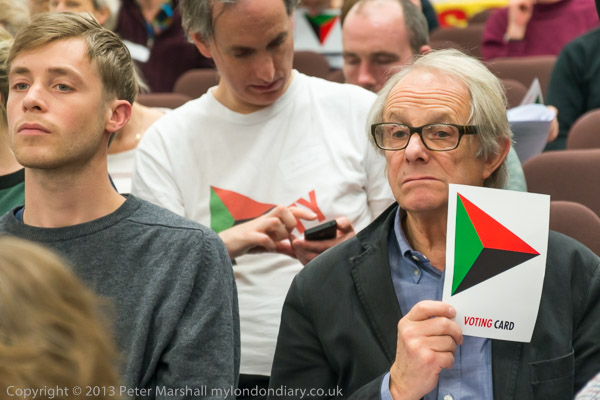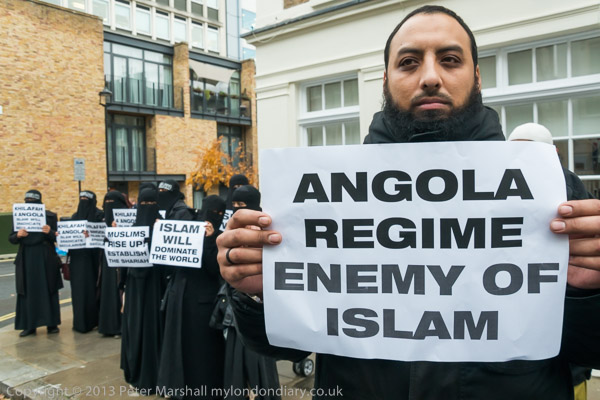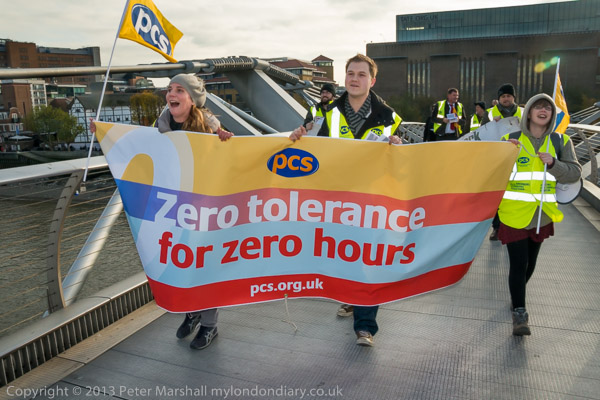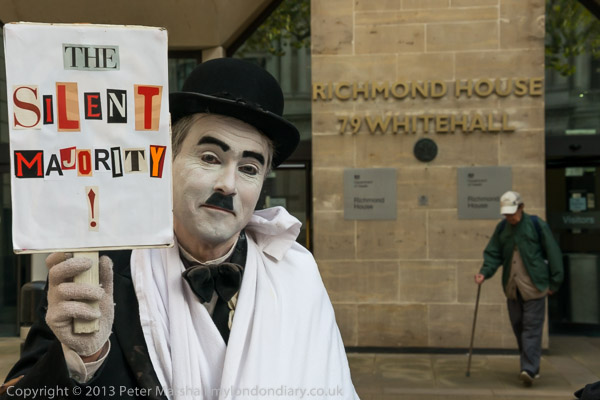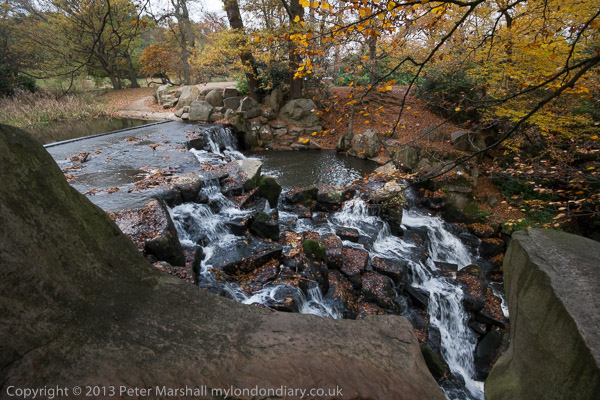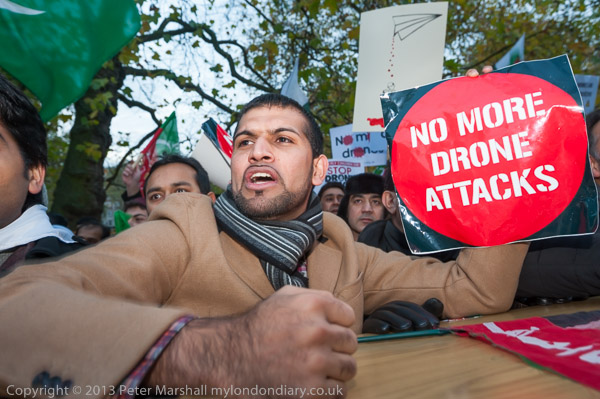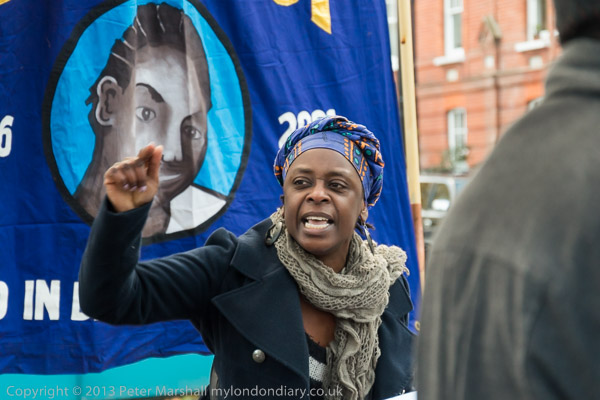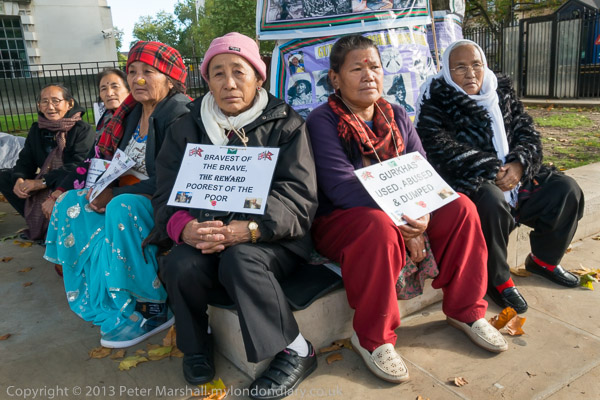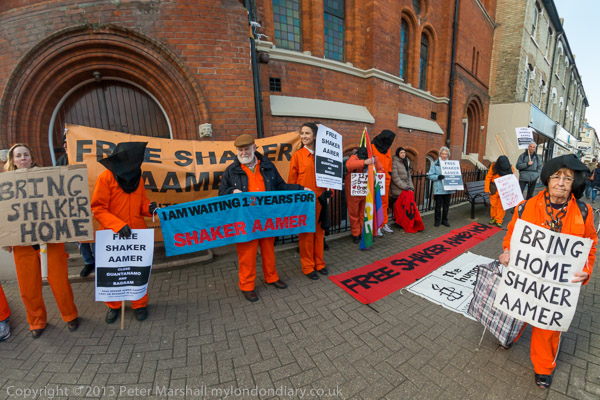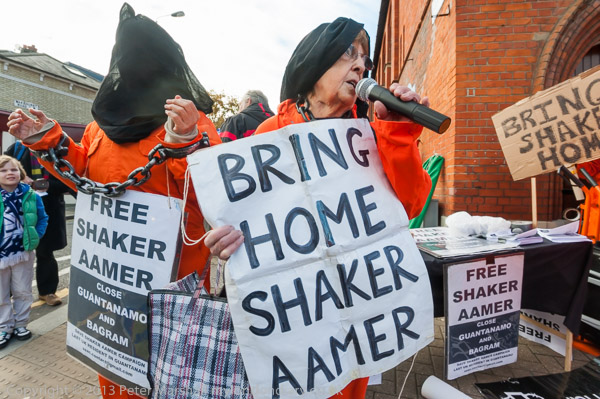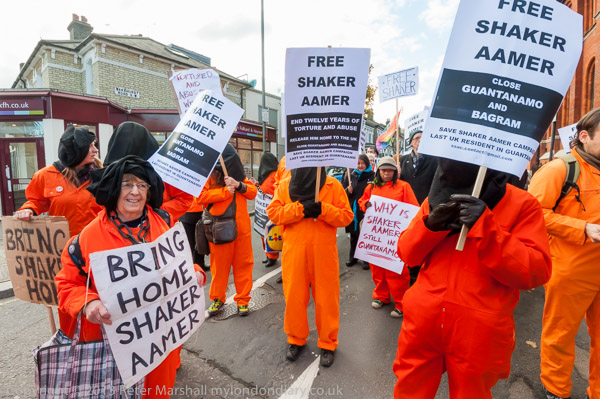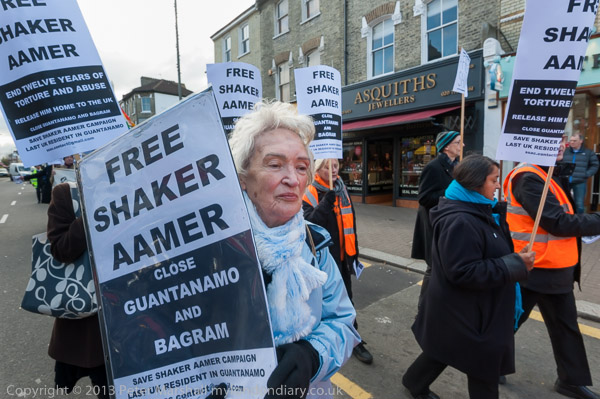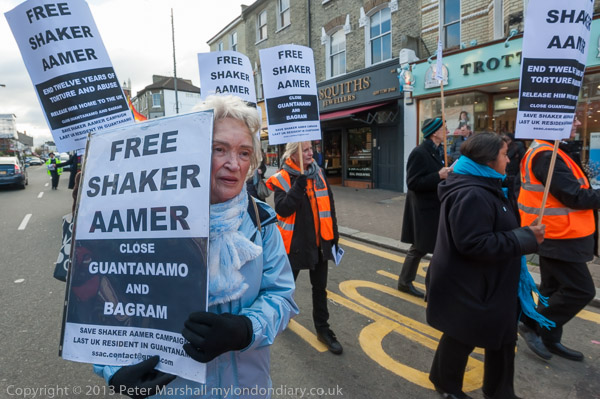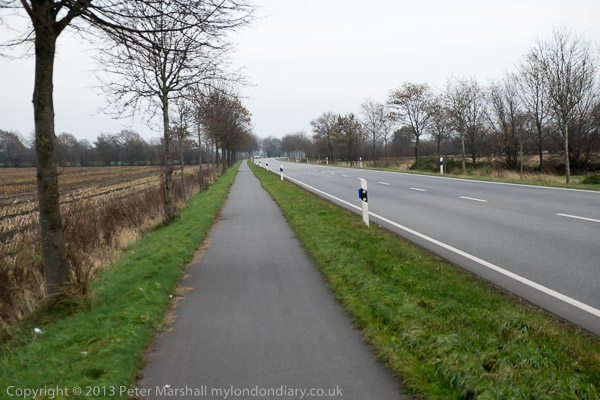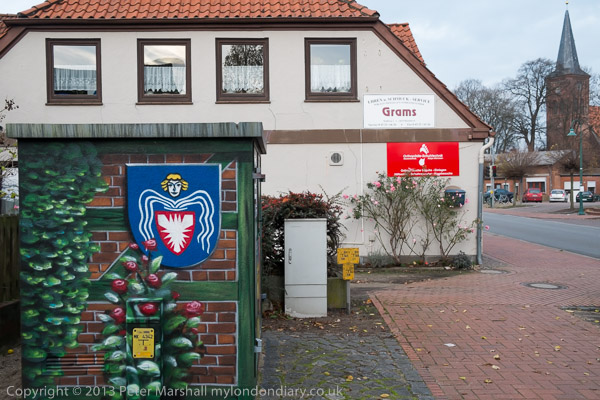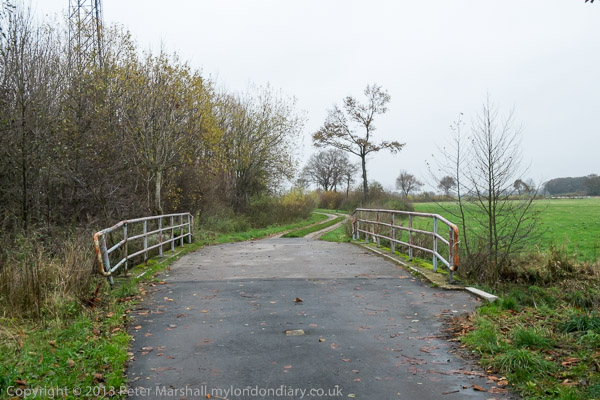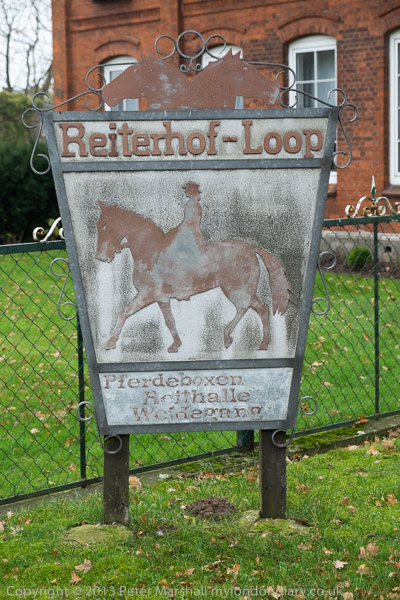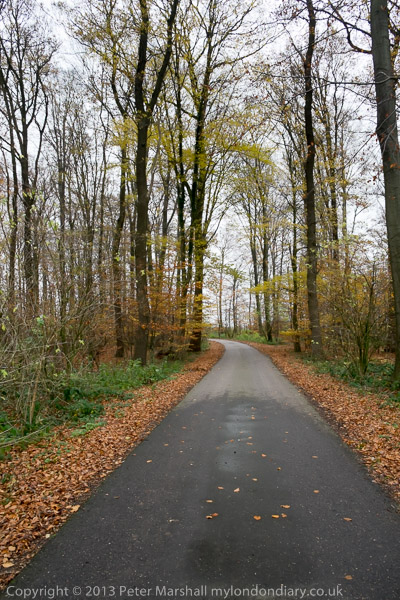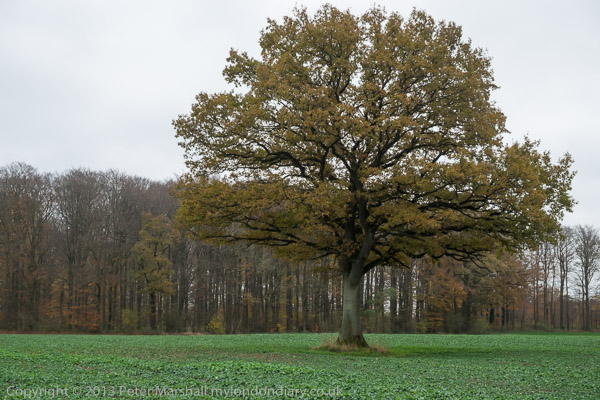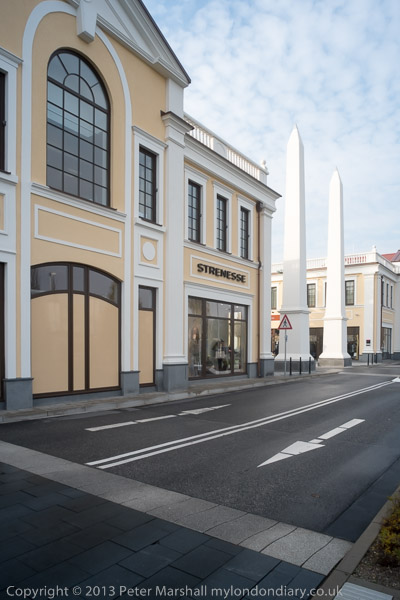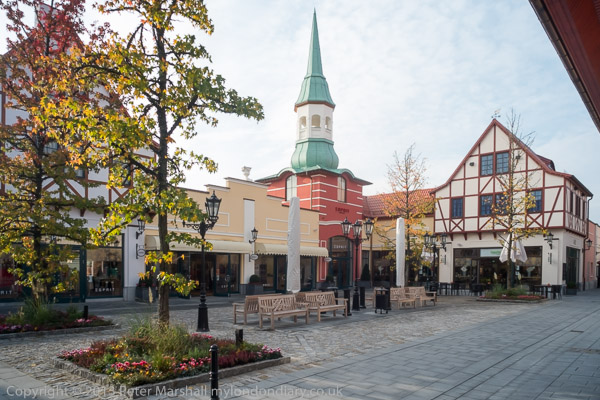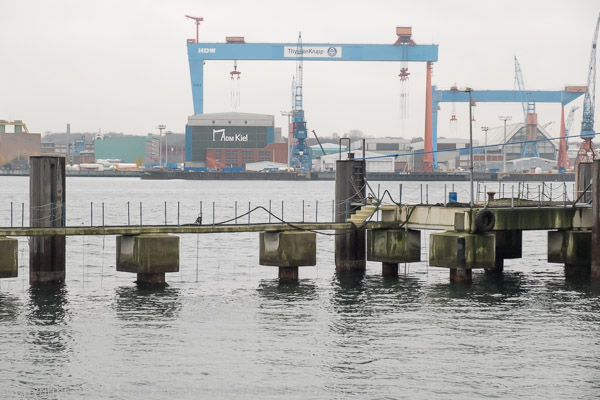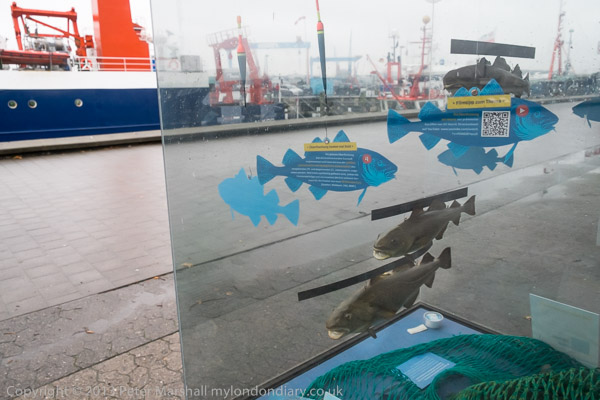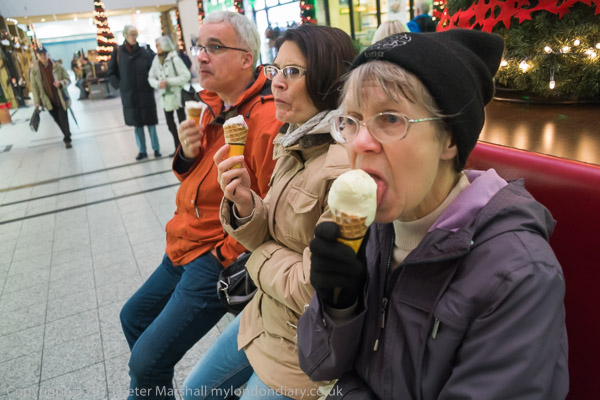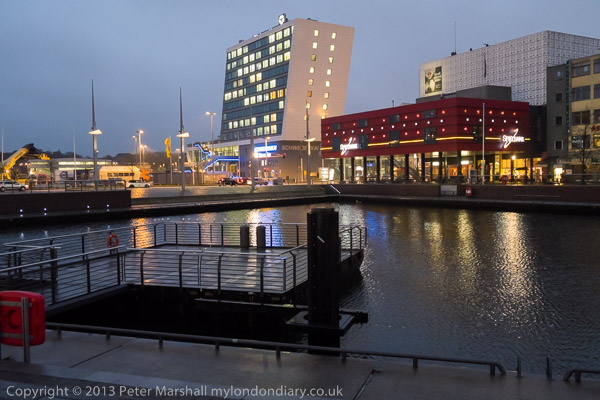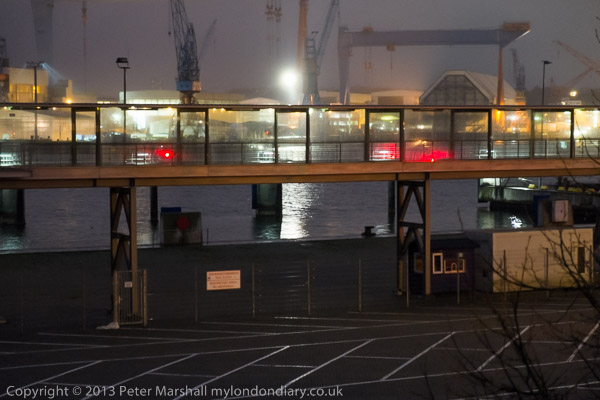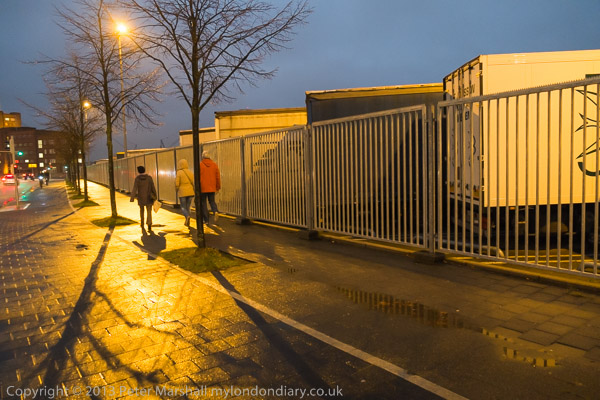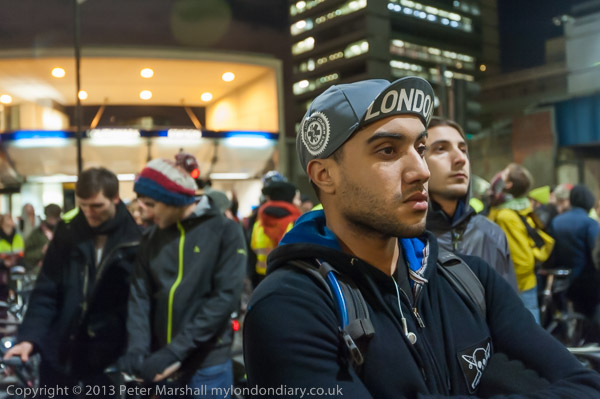
There are some surprisingly dark places on the streets of London, despite the huge output of light which makes the sky starless there. The area of street actually below the offices of Transport for London (TfL) is well lit, but police had taped that area off, and although people were still walking through as usual, cutting off the corner on their route towards the station on their way home, the protest there was kept on the pavement outside, where it was several stops darker.
We were there because of the number of cyclists who are being killed on London’s streets, mainly by lorries and buses – six in the previous few weeks – and TfL are seen to have failed to properly consider cycle (and pedestrians) in their transport plans, which have largely been directed to getting faster movement of cars and lorries.
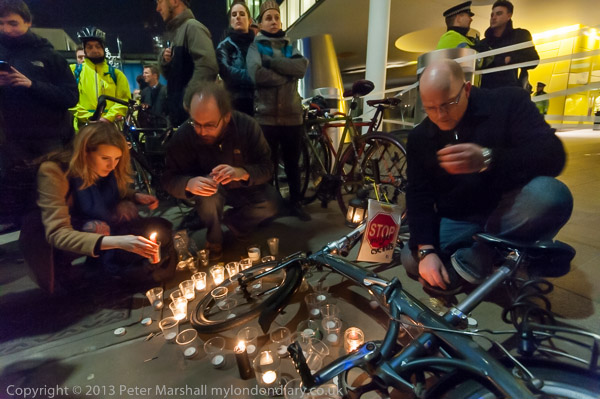
I have the feeling that these changes in lighting have become greater in recent years. Certainly this is true on the suburban street were I live, where a couple of years back the council ripped up all the old lampposts with their mercury vapour lamps and replaced them with new posts carrying much more directional LED lighting on the grounds of economy. It is brighter in places (and light enough inside my house to go down the stairs with reasonable safety in the middle of the night) but midway between the lights the road is rather darker. And perhaps less makes its way into the night sky, though we still seldom see more than a handful of stars.
I set the sensitivity on both Nikons to ISO 3200, generally a practical limit for decent quality at full size, but it was still only giving me exposures of between 1/10 and 1/50s at full aperture as I moved around. Which wouldn’t have been too bad, but often the people I was photographing were moving too and were blurred on the images.
Lenses for digital SLRs are large and heavy things, and apertures of anything affordable and luggable tend to be rather limited, The 18-35mm is a nice lens, but only f4. In the old days I’d instead have been working with the Leica or Konica body and an old 35mm f1.4 Summilux in low light (I had wider lenses too but they were slow, only f4 or even f4.5 so stayed in the bag when it got dark, though I might have occasionally used the 50 f2.) The whole set of lenses was of course lighter and less bulky than the Nikkor.
In colour I’d probably have been using ISO 400 film, while in black and white it would have been Tri-X, pushed to perhaps ISO 1600. But that F1.4 lens (it had cost me around a month’s wages) gave me a 3 stop advantage in terms of exposure – making the ISO 400 equivalent to ISO 3200, and the black and white like working at ISO 12,800. So perhaps things haven’t changed as much in practice as I sometimes think.
Of course with the f1.4 lens wide open, there wasn’t a great depth of field, particularly at close quarters. And of course I could buy fast primes to use on the digital cameras, and perhaps I will, though I think not for the Nikons.
With the right adapter that 35mm f1.4 does work on the Fuji-X cameras (it won’t work with the official Fuji adapter for M mounts lenses, but does with a much cheaper Kipon) but the 1.5x multiplier makes it a standard rather than a wideangle lens.) But the newly announced 23mm f1.4 (35mm equiv) is tempting, and I’ve recently bought the 14mm f2.8 (21mm equiv.)
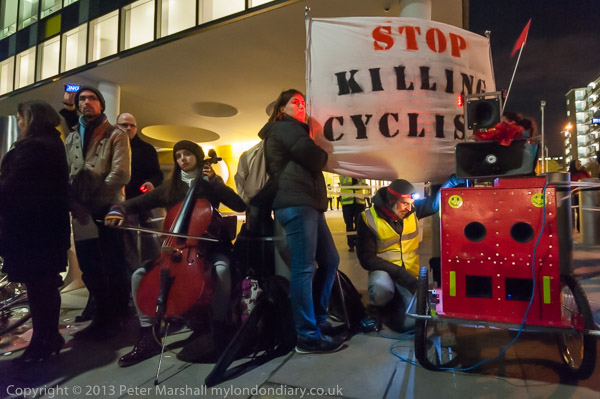
D700. No flash. 16-35mm at 18mm, 1/30 f4
Back with the cyclists, for most of the evening event I worked with the 18-35mnm at f4 on the D700, and with the 18-105mm DX lens (27-157mm equiv) on the D800E, working with flash with the longer lens. It has a variable max aperture from f/3.5-5.6 and I was using it at full aperture, mainly at the wider end, where its focal length overlaps with the wider zoom. I was still using ISO 3200 to get as much exposure as possible from the ambient light, and had the shutter speed set at 1/25th with the camera on shutter priority, so rather curiously the exposures were sometimes greater with the flash than without it! I was using flash more for the different lighting effect it gave, as well as the ability to get sharp images in some of the darker zones.
There were several videographers present at the event, and some of the time putting their video lighting into all or parts of the scene. Sometimes this can be useful for still photographers, and I stole some of their light for my pictures! But it isn’t always helpful, sometimes decidedly unflattering and can put colour balance out, and using flash does help reduce its effect.
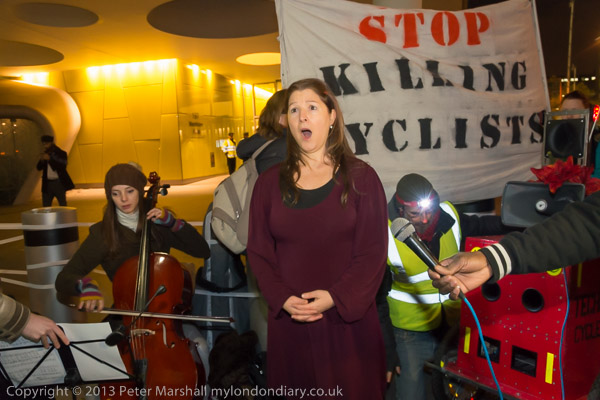
D800E. With flash. 18-105mm at 21mm (35mm equiv) 1/30 f5
The climax of the event was the die-in, when over a thousand cyclists put their bikes on the ground and got down there with them. The street was covered with bikes and bodies, making it virtually impossible to move around. One or two photographers were in the middle of it, either by accident or design, and they did spoil the pictures a little. I’d decided that it was best to work more or less from the edge, getting more cyclists in view, and had chosen to be where I thought they would be most crowded. The background with Southwark Underground station also seemed to be the best.
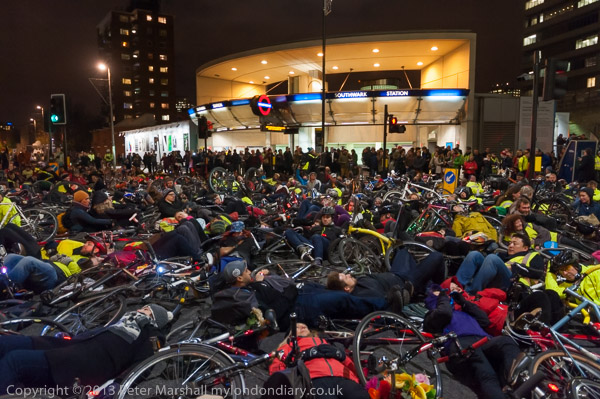
D700, 18-35mm at 28mm, 1/40 f4
I took a few working with the D700, mainly at 16mm, then switched to the D800E; after a few not very successful attempts with the longer focal lengths I wwitched to the 10.5mm fisheye. It’s the fastest lens for the Nikons that I own at f2.8, but I was using it around f4 for these pictures as I still had the ISO at 3200 and slowish shutter speeds. It was this lens that produced the best images of the event.
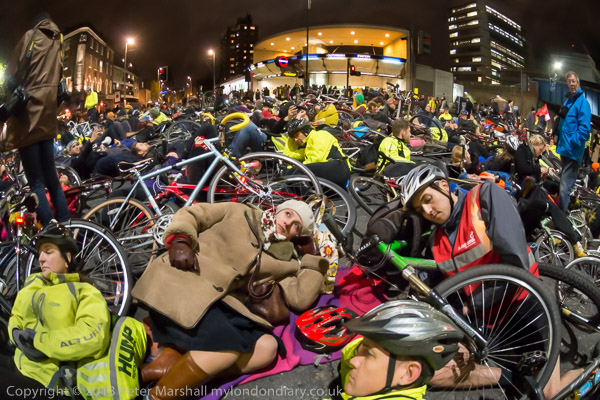
D800E, 10.5mm, 1/40 f4.5
Continue reading Cyclists Die In London

